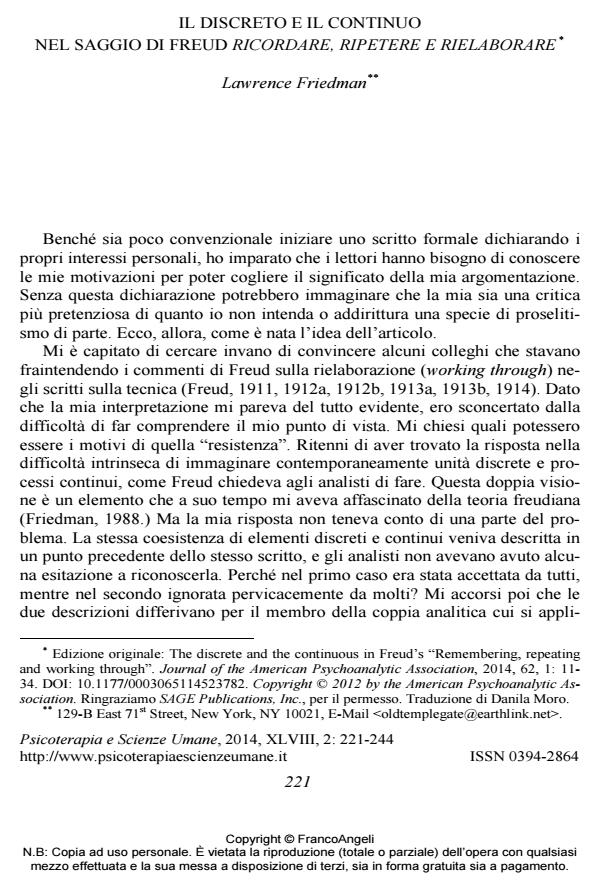Il discreto e il continuo nel saggio di Freud ricordare, ripetere e rielaborare
Titolo Rivista PSICOTERAPIA E SCIENZE UMANE
Autori/Curatori Lawrence Friedman
Anno di pubblicazione 2014 Fascicolo 2014/2
Lingua Italiano Numero pagine 24 P. 221-244 Dimensione file 105 KB
DOI 10.3280/PU2014-002002
Il DOI è il codice a barre della proprietà intellettuale: per saperne di più
clicca qui
Qui sotto puoi vedere in anteprima la prima pagina di questo articolo.
Se questo articolo ti interessa, lo puoi acquistare (e scaricare in formato pdf) seguendo le facili indicazioni per acquistare il download credit. Acquista Download Credits per scaricare questo Articolo in formato PDF

FrancoAngeli è membro della Publishers International Linking Association, Inc (PILA)associazione indipendente e non profit per facilitare (attraverso i servizi tecnologici implementati da CrossRef.org) l’accesso degli studiosi ai contenuti digitali nelle pubblicazioni professionali e scientifiche
Ci sono due brani fondamentali in Ricordare, ripetere e rielaborare (Freud, 1913b) che chiedono all’analista di pensare contemporaneamente alla mente come composta di unità e come un continuum di attività. Benché ciò rappresenti un paradosso conturbante, il passaggio che illustra come l’analista identifichi ricordi discreti nel comportamento continuo del paziente è stato incorporato con facilità nella comune pratica psicoanalitica. Nella direzione inversa, invece, la descrizione del paziente che deve connettere le interpretazioni discrete dell’analista con la propria esperienza continua di tensione è stata molto spesso ignorata con disinvolta superficialità. Suggerisco qui una ragione pratica di questa trascuratezza.
Parole chiave:Rielaborazione, resistenza, teoria freudiana, filosofia, working through
Lawrence Friedman, Il discreto e il continuo nel saggio di Freud ricordare, ripetere e rielaborare in "PSICOTERAPIA E SCIENZE UMANE" 2/2014, pp 221-244, DOI: 10.3280/PU2014-002002